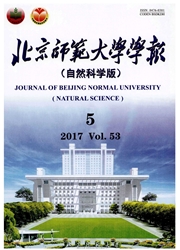

 中文摘要:
中文摘要:
以水田农业典型区湖南鼎城为例,发现在水稻生长期气象条件相近的1985和2001年,水稻单产前高后低.对建立的各旬气象要素变化与抵抗力、恢复力的关系矩阵分析结果表明,灾后降雨对水稻抵抗干旱威胁,恢复正常生理机能至关重要,可以有效地降低因灾损失.在此基础上,初步提出通过采取修建水库(中小型为主)、电力灌溉、打井提水等工程措施保证灾中-灾后及时补充水源,通过发展丘岗山地区线条形蓄水库,增加植被盖度来降低蒸发等措施改善区域气象条件的不足,提高旱灾恢复性.可为从自然和社会经济层面综合评价灾害恢复性提供案例支撑.
 英文摘要:
英文摘要:
Interactions of the lack or uneven precipitation with agricultural productive-living system lead to agricultural drought disaster. Timely water supplementations can effectively alleviate drought and reduce losses. Resilience is defined as the capacity of a system to endure disturbances without changing to a different system. System resilience can take two forms. A system may resist change (resistance), or a system changes but rapidly recoveres (recovery). Little attention has been paid to relationship between disturbance change and resilience. Based on the study in Dingcheng, Hunan province, it was found that the precipitation and evaporation in 1985 and 2001 were similar, but grain yield losses per unit area were different, with the latter being higher. With a matrix involving meteorological factors (such as precipitation, evaporation) and change/ resilience (resistance/recovery), it was possible to analyze the relationship between met factors and system resilience. Data showed that precipitation after a drought plays an important role in resisting drought and facilitating recovere to normal physiological function of the paddy field. It is then suggested that the following measures be taken to strengthen the system resilience and to improve regional weather conditions: a) constructions of reservoirs, power irrigation, water wells and other engineering measures to improve water supply; b) development of line-shaped water reservoirs, high vegetation density in hilly area to reduce evaporation. This paper provides a good example for comprehensive evaluation of disaster resilience from the physical and socio-economic aspects.
 同期刊论文项目
同期刊论文项目
 同项目期刊论文
同项目期刊论文
 Restoring urbanization process in China in the 1990s by using non-radiance calibrated DMSP/OLS night
Restoring urbanization process in China in the 1990s by using non-radiance calibrated DMSP/OLS night Rocky desertification and its causes in karst areas:a case study in Yongshun County,Hunan Province,C
Rocky desertification and its causes in karst areas:a case study in Yongshun County,Hunan Province,C Microcatchment water harvesting for growing Tamarix ramosissima in the semiarid loess region of Chin
Microcatchment water harvesting for growing Tamarix ramosissima in the semiarid loess region of Chin Influence of various in situ rainwater harvesting methods on soil moisture and growth of Tamarix ram
Influence of various in situ rainwater harvesting methods on soil moisture and growth of Tamarix ram Modelling Net Primary Productivity of Terrestrial Ecosystem in East Asia Region Based on Improved CA
Modelling Net Primary Productivity of Terrestrial Ecosystem in East Asia Region Based on Improved CA Spatial patterns of ecosystem carbon residence time and NPP-driven carbon uptake in the conterminous
Spatial patterns of ecosystem carbon residence time and NPP-driven carbon uptake in the conterminous Detecting the impact of the "Grain for Green" program on the mean annual vegetation cover in the Sha
Detecting the impact of the "Grain for Green" program on the mean annual vegetation cover in the Sha Aeolian dust accumulation by rock fragment substrata:influence of number and textural composition of
Aeolian dust accumulation by rock fragment substrata:influence of number and textural composition of Rainfall harvesting on slopes using contour furrows with pla stic-covered transverse ridges for grow
Rainfall harvesting on slopes using contour furrows with pla stic-covered transverse ridges for grow 期刊信息
期刊信息
